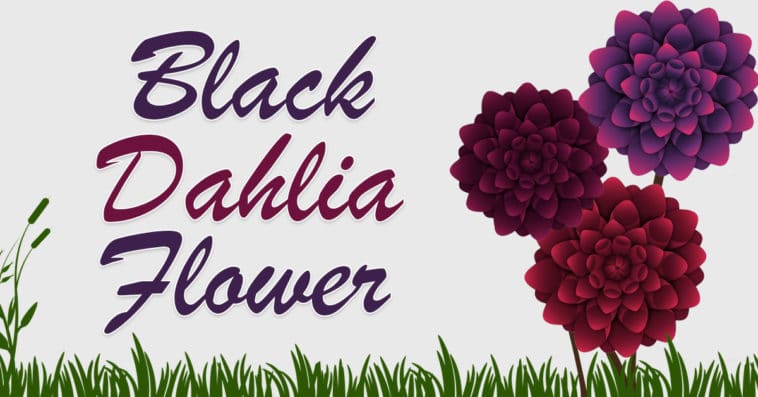Garden
Black Dahlia Flower Guide for Its Meaning, Symbolism, Growth and Care
About Dahlia Flower and Black Dahlia Flower
Dahlia (UK: /ˈdeɪliə/ or US: /ˈdeɪljə, ˈdɑːl-, ˈdæljə/) is a genus of bushy, tuberous, herbaceous perennial plants native to Mexico and Central America. A member of the Compositae (also called Asteraceae) family of dicotyledonous plants, its garden relatives thus include the sunflower, daisy, chrysanthemum, and zinnia. There are 42 species of dahlia, with hybrids commonly grown as garden plants.
Flower forms are variable, with one head per stem; these can be as small as 5 cm (2 in) diameter or up to 30 cm (1 ft) (“dinner plate”). This great variety results from dahlias being octoploids—that is, they have eight sets of homologous chromosomes, whereas most plants have only two. In addition, dahlias also contain many transposons—genetic pieces that move from place to place upon an allele—which contributes to their manifesting such great diversity.
The stems are leafy, ranging in height from as low as 30 cm (12 in) to more than 1.8–2.4 m (6–8 ft). The majority of species do not produce scented flowers. Like most plants that do not attract pollinating insects through scent, they are brightly colored, displaying most hues, with the exception of blue.
The dahlia was declared the national flower of Mexico in 1963. The tubers were grown as a food crop by the Aztecs, but this use largely died out after the Spanish Conquest. Attempts to introduce the tubers as a food crop in Europe were unsuccessful.
Description
Dahlias are perennial plants with tuberous roots, though they are grown as annuals in some regions with cold winters. While some have herbaceous stems, others have stems which lignify in the absence of secondary tissue and resprout following winter dormancy, allowing further seasons of growth. As a member of the Asteraceae, the dahlia has a flower head that is actually a composite (hence the older name Compositae) with both central disc florets and surrounding ray florets. Each floret is a flower in its own right, but is often incorrectly described as a petal, particularly by horticulturists. The modern name Asteraceae refers to the appearance of a star with surrounding rays.
History
Early history
Spaniards reported finding the plants growing in Mexico in 1525, but the earliest known description is by Francisco Hernández, physician to Philip II, who was ordered to visit Mexico in 1570 to study the “natural products of that country”. They were used as a source of food by the indigenous peoples, and were both gathered in the wild and cultivated.
The Aztecs used them to treat epilepsy, and employed the long hollow stem of the Dahlia imperalis for water pipes. The indigenous peoples variously identified the plants as “Chichipatl” (Toltecs) and “Acocotle” or “Cocoxochitl” (Aztecs). From Hernandez’s perception of Aztec, to Spanish, through various other translations, the word is “water cane”, “water pipe”, “water pipe flower”, “hollow stem flower” and “cane flower”. All these refer to the hollowness of the plants’ stem.
Hernandez described two varieties of dahlias (the pinwheel-like Dahlia pinnata and the huge Dahlia imperialis) as well as other medicinal plants of New Spain. Francisco Dominguez, a Hidalgo gentleman who accompanied Hernandez on part of his seven-year study, made a series of drawings to supplement the four volume report. Three of his drawings showed plants with flowers: two resembled the modern bedding dahlia, and one resembled the species Dahlia merckii; all displayed a high degree of doubleness.
In 1578 the manuscript, entitled Nova Plantarum, Animalium et Mineralium Mexicanorum Historia, was sent back to the Escorial in Madrid; they were not translated into Latin by Francisco Ximenes until 1615. In 1640, Francisco Cesi, President of the Academia Linei of Rome, bought the Ximenes translation, and after annotating it, published it in 1649–1651 in two volumes as Rerum Medicarum Novae Hispaniae Thesaurus Seu Nova Plantarium, Animalium et Mineralium Mexicanorum Historia. The original manuscripts were destroyed in a fire in the mid-1600s.
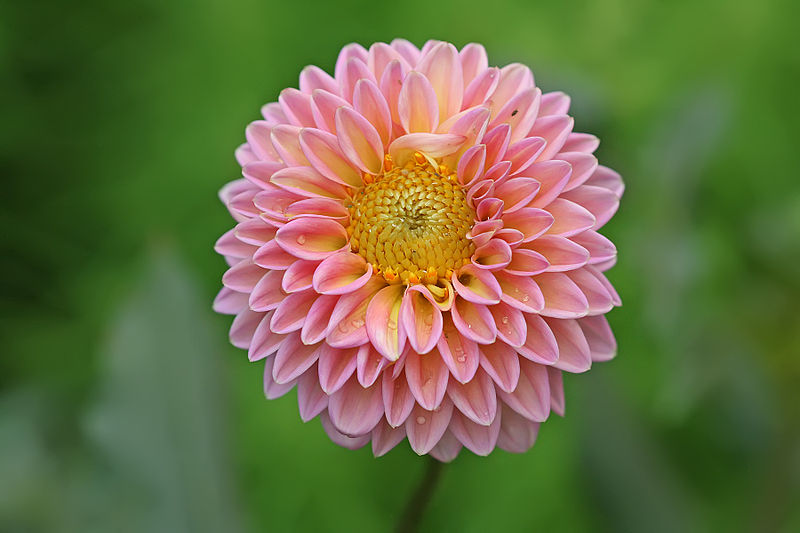
Sensitive nature, joyful beauty, classical temperament and a sense of empowerment, while we seek something good, nature never disappoints us.
We’ve come to find the Black Dahlia Flower.”
Dahlia flowers come in a variety of colors and exhibit whimsical powers and vibrations; they are majestically dizzying buds with no poisonous adhesives.
Enriched with soothing abilities, Dahlias symbolize grace, strength, kindness, relaxation and devotion.
But despite having so many colors, Black Dahlia flowers are most in demand among flower enthusiasts and gardeners.
Would you like to grow it in your garden?
Well, whenever it comes to growing black dahlias in your garden, a lot of questions come to your mind;
Is the black dahlia a real thing, what does it symbolize, why is it so in demand, what are its uses, can I grow it at home and so on.
For all your questions, this document has been designed with questions asked by users, specifically answers from Dahlia-Flora experts.
Table of Contents
Black Dahlia Flower:
Often the flowers look bright and are used metaphorically when talking about brightness, vibrancy and colour.
Therefore, dark shades of flowering plants are rare, different and more in demand, like the Black Dahlia Flower. For your information:
“There’s nothing quite like a Black Dahlia Flower, but the fascinating textures of the burgundy dahlia flower appear so dark at first appearance that the viewer sees them as black.”
“The black dahlia flower is also called the wine-colored dahlia flower because of its intoxicating and calming ash-purple hue.”
But if you grow black dahlia flowers, they look black, haunted at first glance and offer elite scenes for gothic gardens.
These flora thrive outdoors but fascinate indoors.
(For more in-depth information on rare, fascinating yet easy-to-grow Plants, visit our garden area.)
Is Black Dahlia A Reality?
According to research, flowers in pure colors are rare.
Sources report that there is nothing like a naturally occurring Black Dahlia Flower!
Sometimes the fascinating textures of burgundy dahlia flower appear so dark at first glance that the beholder sees them as black dahlia flowers.
“The black dahlia flower is also called the burgundy dahlia flower because of its intoxicating and calming ash-purple hue.”
Black Dahlia blooms offer elite scenes for gothic gardens.
A question arises, is there a black Dahlia?
Yes, not naturally, but engineered dahlia species are now available in true black tones.
Engineers use specific yet artificial flavone content to produce dahlias in certain colors, such as Black.
Thanks to advances in science, we can now have more than 20,000 varieties of Dahlias worldwide, from 10 to 20 varieties in black.
Varieties of Black Dahlia flowers:
Here are the different black looking Dahlias flower varieties that you can make a part of your home garden:
Dahlia Arabian night, it has deep red petals that are so-maroon from middle and often referred to as black flowers.
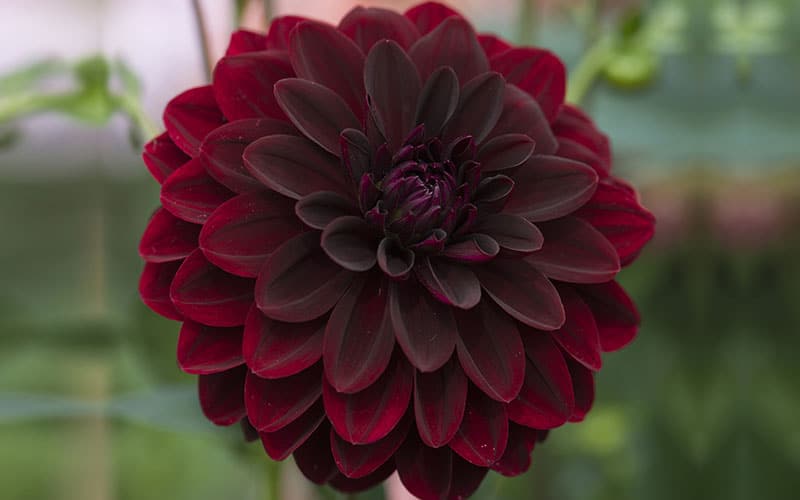
Dark burgundy dahlias, once again due to dusky texture in the petals, appear as black.
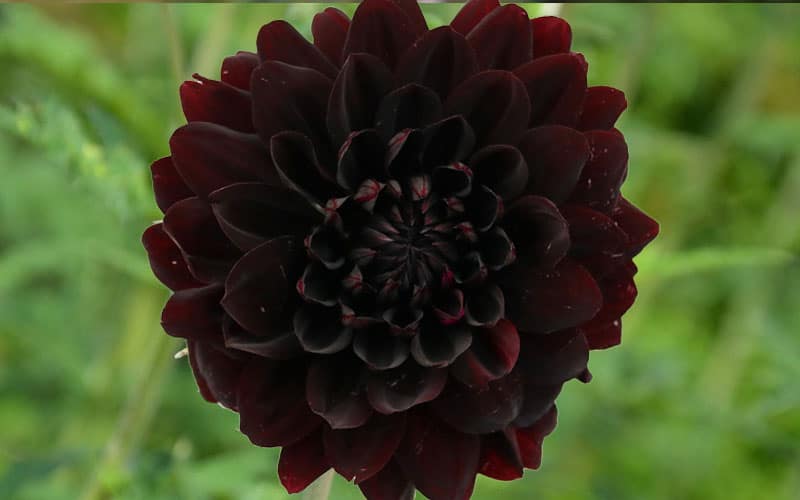
Black Beauty Dahlia, actually mahogany red in color and texture, seems like murky when seen the first time.
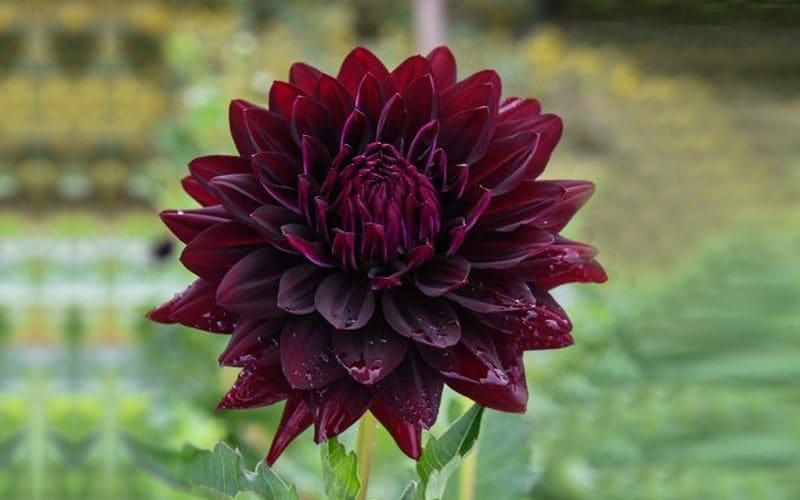
Black Dahlia Flower Meaning:
Dahlia blooms give you a message of strength, focus, and success.
Black Dahlia says:
No matter how difficult a path may seem, you should never stop your journey to destiny.
This flower grows from the ground despite obstacles in the way and therefore symbolizes grace, strength, kindness, relaxation and devotion.”
Sometimes the color black also indicates betrayal!
The powerful symbolism of the black dahlia has been here for centuries.
They bring energy, strength, hope and positive feelings.
The dahlia flower is full of hidden essence and secrets where each color has a different meaning.
The same flower we have is the buttercup flower.
Growing Dahlia In Your Garden
1. Select the Summer or Spring Season
Although a perennial herb, Dahlias grow best from mid-April to May..
2. Plant Seeds?
The planting of the seeds depends on the soil type. Fortunately, Dahlia can tolerate different soil conditions.
To get beautiful blooms quickly, you can prefer well-drained sandy soil, having pH levels between 6.2- 6.5.
The mud requires to be a bit acidic lower than the reading of pH 7.
3. Light Conditions:
Dahlia blacks are summer plants. They love the bright rays of the sun and blooming and dancing under it.
For this, choose an area that gets the most hours of sun.
According to statistics:
“A corner that receives 8 hours of continuous sunlight is great for Black Dahlias to grow.”
4. Watering Conditions:
Dahlias are summer flowers, again very easy to grow in areas where sunlight is most intense and water levels are low.
Similar easy-to-grow plants we have are succulents. Read detailed guides on succulents you can grow at home.
If you need a shade-loving plant perfect for indoors, bring Monstera adansonii home. Click and read the full Monstera adansonii care guide.
5. Black Dahlia Zone:
Dahlia flower zone will be hardy to zone 9.
Growing Dahlia Buds in Pots for Winters:
- Get a one-gallon pot
- Put dahlia tubers in them for about two to four weeks.
- When sprouting starts, change the pot’s placement and put it under direct sunlight, such as in an east-facing window.
- Once frozen-season has gone, transfer it in the garden.”
Black Dahlia Flower Care:
Here’s how to care for your dahlia black in the long run.
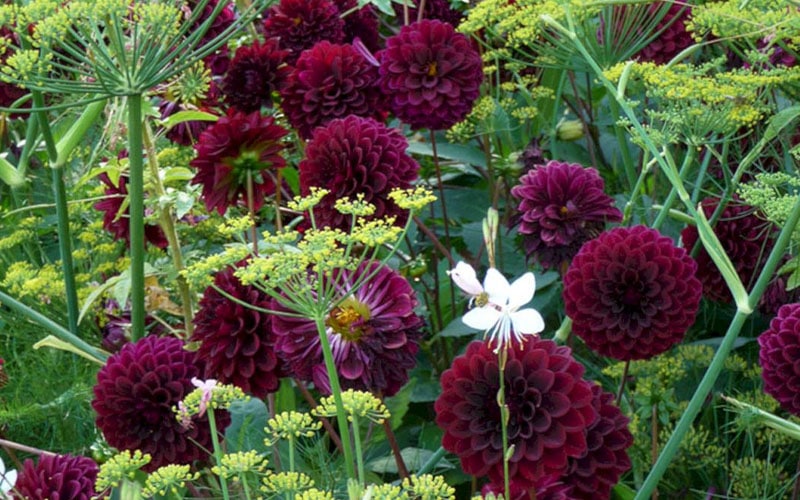
1. Watering:
Keeping with the watering schedule, water the plant three times a week or change the cycle according to the weather, atmosphere and climate of the area.
Do you know that not all plants like watering and they want you to water them moderately? Such examples we have are Monstera epipremnoides, Peperomia rosso, Ceropegia and Phlebodium aureum etc.
2. Fertilizers :
Although dahlias take nutrients from the soil, they need fertilizer for healthy flowers.
Fertilize your Dahlias (Black or any other color) regularly every month.
Only use organic fertilizers with a soluble texture made specifically for flowers, but never go with nitrogen fertilizers.
3. Pest Control:
Dahlia black is a plant with healthy and strengthening texture; however, insects, mites and beetles can attack the plant and disrupt its growth.
Bugs that can attack dahlia plants are snails, slugs, spider mites, earwigs, and cucumber-beetles.
Snails and slugs love to eat new shoots, leaves and stems. In case of snail attack you will see bitten shoots.
The leaves will be displayed with yellow texture due to spider mites.
If you see bitten leaves, it’s most likely caused by earwigs and cucumber beetles.
After two weeks of planting, even if the sprouting or blooming started or not, you will have to start pest control.
The good thing is; you can use general pesticides against all termite attacks.
Black Dahlia Flower Toxicity:
Dahlia is non-toxic to humans.
People can eat dahlia tubers, flowers, stem, actually the whole plant, for a taste of licorice.
Dahlia tubers that grow throughout summers resemble fat potatoes in appearance but not in taste.
Dahlia is toxic to pets
Still, dahlia is edible for humans, but not for pets.
Black Dahlia Flower is toxic to dogs, cats and other animals.
If consumed, your pet may experience mild gastrointestinal and dermatitis symptoms.
Dahlia Facts:
Here are seven rare and little-known facts about black dahlias:
- There were 30 known species of Dahlia, 20,000 varieties, and around a thousand flower varieties.
- Dalia is native to Mexico in central America; The genus Bushy is a perennial herb.
- Dahlia was originally considered a vegetable, but is now often used as a spice in foodstuffs.
- Most plants have only two sets of homologous chromosomes, while Dahlia have eight.
- The dahlia flower is used for symbolism at weddings.
- Dahlia is toxic to pets such as cats and dogs. Wondering what your pets can eat?
Black Dahlia Flowers Uses?
Before you enter and start the process of how to grow dahlia in the garden or at home, let us tell you, Dahlias can be used for several positive purposes such as:
1. Economical Purpose:
Dahlias are grown at higher levels to make money and keep the world alive as they are enriched with fantastic elements just like the mini monstera plant.
It is used as a cutting in landscaping and floriculture. With different cuts, more and more Dahlia species are being invented and discovered every day.
2. Therapeutic Purpose:
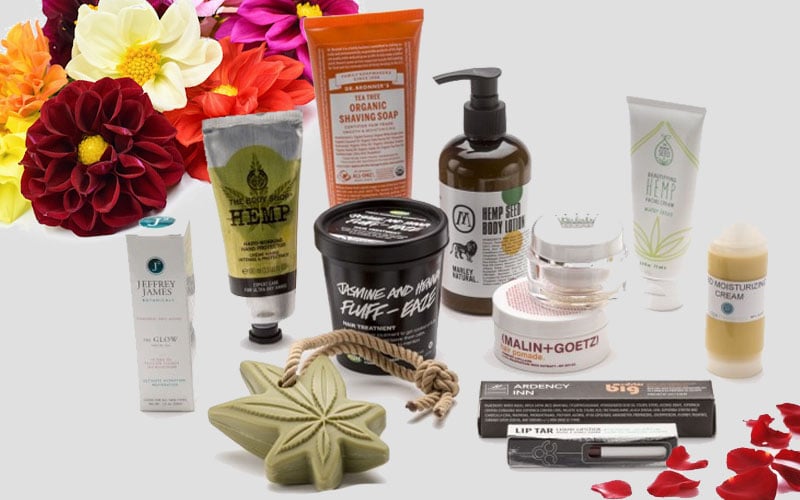
Black Dahlia is enriched with all the essential elements to keep the human and animal bodies healthy.
It also helps address a variety of serious and chronic diseases. Dahlias roots and flowers are extremely useful in making cosmetics and medicines.
3. Black Dahlia Tattoo:
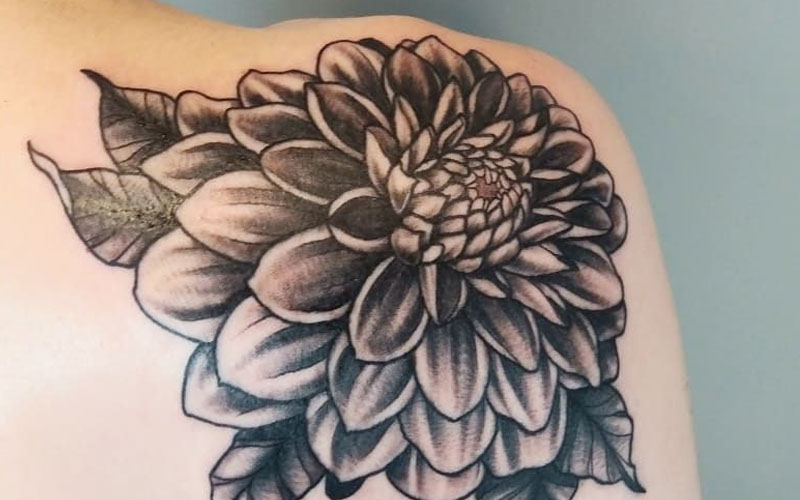
The look of black dahlia buds is impressive yet attractive enough to become one of the trendiest designs for tattoos.
Tattooists and tattoo lovers embroider this flower on their shoulders, arms, back, thighs and even face.
4. Food Making:
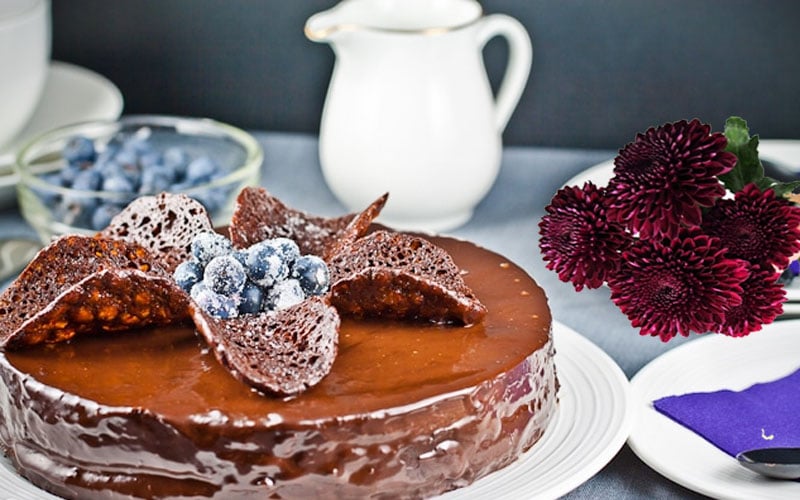
Since 1840, Dahlia has been used as a food and culinary source.
Many food experts use its tuberous roots and flowers as a spice ingredient in their recipes for a unique and rare flavor.
It is used in cooking in modern kitchens as well as in the old ways of ethnic cooking.
5. Black Dahlia Flower Jewelry:
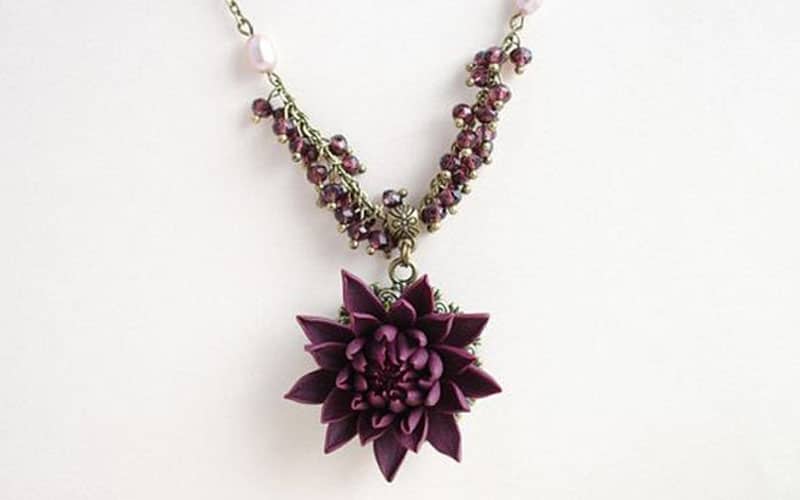
Due to its attractive shape, the black dahlia is used in many jewelry designs such as necklaces, earrings and other women’s accessories. They are easily available online, but you can also make dahlia jewelry at home.
Black Dahlia Blossoming FAQs:
This episode was designed with the help of our readers and our fan club at IU.
Gardeners following us later asked questions about the care and general health of Dahlia Buds.
1. What Does Dahlia Symbolize?
These vibrant summer flowers symbolize inner strength, grace, change, dignity and creativity in general.
Beautiful ornate wood is equally meaningful for bringing positive vibes into your home.
Be sure to check out our classic guides on substitutions for interesting herbs and spices.
In the Victorian era, Dahlia flowers were used to symbolize commitments and lifelong bonds between two people, such as marriage.
2. Are Dahlias Perennials?
Yes, Dahlia is a perennial plant however grown best during summers and springs.
If you want plants that bloom all year, grow evergreen Clusia rosea.
3. Do Dahlias Flower Each Year?
Yes!
4. When Do Dahlias Bloom?
Dahlias bloom best from mid-April to May. To plant dahlia seeds, you should prefer spring to summer.
5. Does the Flower Dahlia Like Full Sun?
Yeah! Dahlias like full sun. 6-8 hours of direct sunlight helps this plant bloom easily all summer long. In addition, dahlia grows better with each cut.
Another plant variety that grows very well outdoors is the genus selaginella. Click and read the entire guide.
6. Do Dahlias Multiply?
Yeah! Dahlia tubers reproduce underground every year. A tuber with only one eye is sufficient for the successful growth of a complete black dahlia plant.
7. Will Dahlias Grow in Shade?
Number! Dahlias love sun, so an area with 6 to 8 hours of direct sunlight is best for growing dahlias.
If you want to grow tons of flowers, choose from huge and beautiful monstera species.
Bottom Line:
Well, it’s all about planting and choosing the best Black Dahlia plant for your garden. Before we finish, let’s tell you an exciting story about the history of the black Dahlia.
In 1947, an actress named Elizabeth Short was brutally murdered and murdered. Shortly after his death, he was given the title “Black Dahlia” by researchers for unknown reasons.
However, the black Dahlia flower is never about murder or killing, it is about life, positive vibes, strength and happiness.
Have it in your garden to surround yourself with optimism. Also, the floral design is so trendy that art lovers love getting their tattoos done on their body.
Also, don’t forget to pin/bookmark and visit our blog for more interesting but original information.

